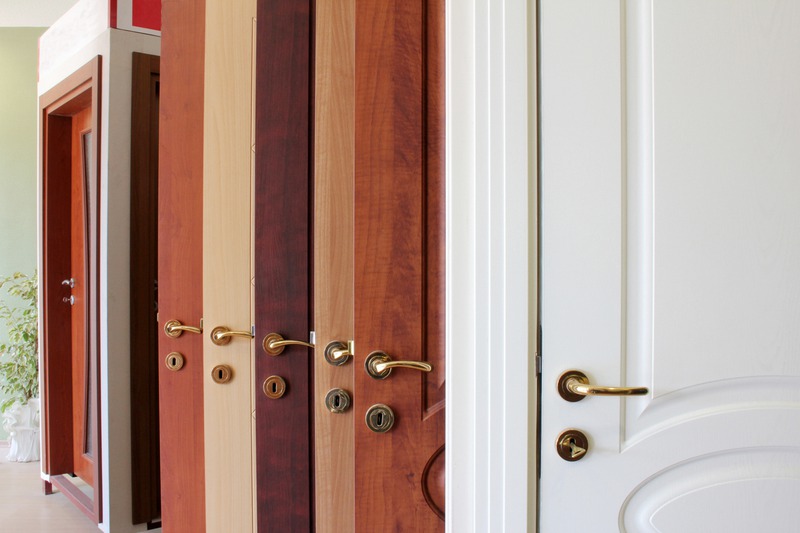Custom doors are a great way to add a unique touch to your home. They enhance the look of your space, offer improved functionality, and can be tailored to meet your specific needs. However, installing custom doors comes with its own set of challenges. From sizing issues to ensuring a proper fit, getting it right takes careful planning and attention to detail. In this article, we’ll explore some common installation challenges and offer practical solutions to help you achieve a smooth installation process.
How to Overcome Custom Door Installation Challenges
Custom doors are designed to fit perfectly into your home, but installation can take time and effort. Below are some common challenges people face and tips on handling them effectively.
1. Ensure Accurate Measurements
One of the biggest challenges with custom door installation is getting the measurements right. Unlike standard doors, custom doors are made to fit specific spaces, and even a slight miscalculation can lead to significant issues.
To avoid this problem:
-
Measure the doorframe multiple times to ensure accuracy.
-
Consider hiring a professional to take measurements if you need clarification.
-
Always account for any trim or casing when measuring the space.
These steps can save you time and prevent costly mistakes down the road.
2. Handling Heavy Doors
Custom doors, especially the best custom front entry doors, are often heavier than standard ones. This weight can make installation more complex and require extra support to ensure the door is secure and properly functioning.
To manage the weight of the door:
-
Use sturdy hinges designed to support heavier doors.
-
Have an extra set of hands available to help during the installation.
-
Ensure the frame is strong enough to hold the door’s weight.
By planning, you’ll avoid struggling with the door’s weight during installation.
3. Managing Irregular Openings
Many homes have irregular or non-standard door openings, which can complicate the installation of a custom door. If the opening is uneven or the frame is slightly out of square, fitting the door can be a challenge.
To overcome this issue:
-
Check the doorframe for any irregularities before installing.
-
Use a level to ensure the frame is straight, and adjust it as needed.
-
Consider trimming the door to fit, but avoid overdoing it.
Addressing these issues before installation ensures a better fit for your custom door.
4. Dealing with Tight Spaces
Sometimes, custom doors must be installed in tight spaces or awkward areas with little room for adjustment. This can make it difficult to maneuver and adequately install the door.
To deal with tight spaces:
-
Plan the installation ahead of time and measure the available space carefully.
-
Remove any obstacles around the area that may get in the way.
-
Consider removing trim or molding temporarily to give yourself more room to work.
Proper planning can prevent frustration and make the installation process more manageable.
Choosing the Right Materials for Custom Doors
Custom doors are available in a variety of materials, and selecting the right one is key to a successful installation. Your chosen material can affect the door’s weight, durability, and overall look. Whether you’re looking for wood, steel, or fiberglass, it’s essential to understand the pros and cons of each.
1. Wood Doors
Wooden doors are popular for exterior residential doors due to their classic look and versatility. However, they are also heavier and require more maintenance.
If you’re considering wood:
-
Make sure the wood is properly sealed to prevent warping or moisture damage.
-
Be prepared for regular upkeep, such as staining or repainting.
-
Choose hardwoods like oak or mahogany for added durability.
Wood doors offer timeless appeal but require more effort to maintain.
2. Steel and Fiberglass Doors
Steel and fiberglass doors are great alternatives to wood. They’re more durable, require less maintenance, and are often easier to install due to their lighter weight.
For steel or fiberglass doors:
-
Ensure the door is insulated if you use it as an exterior door.
-
Check the manufacturer’s instructions for installation, as these materials may require special tools.
-
Opt for a finish that matches your home’s style for a cohesive look.
Steel and fiberglass are practical choices, especially for those looking for a low-maintenance option.
Addressing Custom Door Hardware
Another aspect to consider when installing custom doors is the hardware. Choosing the right hardware is essential for both functionality and style, from handles to locks. For instance, heavier doors may require more robust hinges, and a leaded glass front door may need specialized hardware for added support.
When selecting hardware:
-
Choose durable materials that match the door’s weight and design.
-
Opt for weather-resistant options if the door is exposed to the elements.
-
Ensure the hardware fits the overall aesthetic of the door and your home.
Proper hardware can enhance the door’s performance and look, making it a key consideration in the installation process.
Common Mistakes to Avoid During Installation
To ensure a smooth installation process, it’s helpful to be aware of common mistakes and how to avoid them. Some of the most frequent issues include:
-
Rushing the installation without adequately preparing the space.
-
Skipping the step of leveling the door which can lead to misalignment.
-
Not securing the frame properly causes the door to sag over time.
Avoiding these mistakes can save you a lot of headaches and help you achieve a professional-looking result.
What to Do If You Encounter Issues
Even with the best preparation, issues may still arise during installation. Here are a few tips to troubleshoot common problems:
-
If the door doesn’t close properly, check for obstructions or misalignment.
-
For squeaky hinges, apply a lubricant to reduce friction.
-
Consider sanding down the edges or adjusting the hinges if the door sticks.
You can still achieve a successful installation by staying calm and addressing these issues as they arise.
Wrapping Up
Installing custom doors may seem challenging, but with careful planning and attention to detail, it’s entirely manageable. Focus on accurate measurements, choose suitable materials, and prepare for irregularities. Don’t forget to select sturdy hardware that complements the door. Finally, take your time during the installation process to avoid common mistakes. Finding the right balance between style and functionality is essential when installing custom doors. By following these tips, you’ll be well-equipped to overcome any installation challenges and enjoy the benefits of a custom door for years to come.



